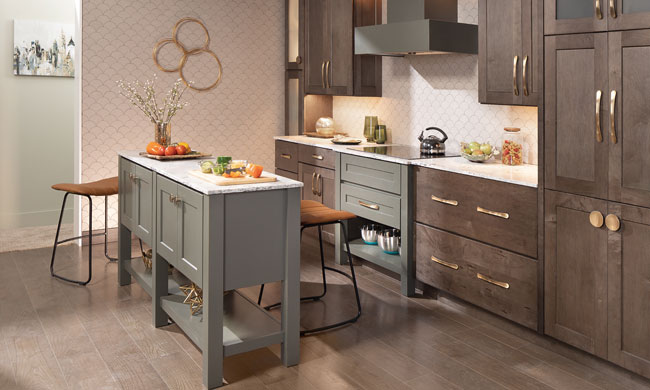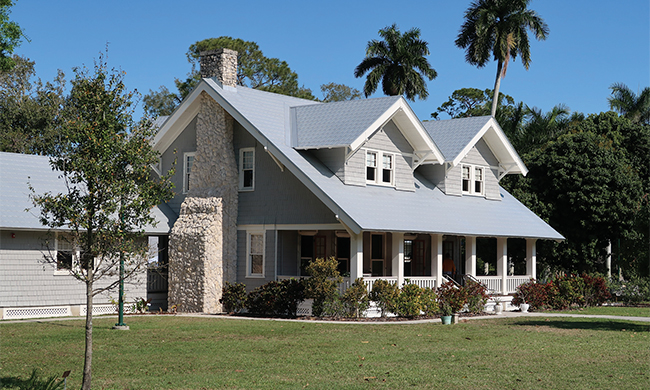
 (Family Features) Whether you’re looking to add value for potential sale or simply create a more comfortable living space, now is the perfect time to breathe new life into your home with projects that provide a high return on investment (ROI).
(Family Features) Whether you’re looking to add value for potential sale or simply create a more comfortable living space, now is the perfect time to breathe new life into your home with projects that provide a high return on investment (ROI).
Consider these top home renovation projects:
Remodel the Kitchen and Bathroom
The average seller can expect an 96.1% return on a light touch to the kitchen, according to the report, and 73.7% on a modest bathroom renovation. Because personal preferences can vary widely among buyers, minor upgrades can provide a higher ROI than large, upscale remodels. A few easy ways to refresh your kitchen or bathroom include updating shelving or adding new hardware. Decorative trim and mouldings are also cost-effective ways to add visual interest.Upgrade with Stone Veneer
As natural and textured home trends continue, homeowners are gravitating toward stone veneer, or manufactured stone, as it can replicate the look of real stone, adding comfort, character and beauty to homes. An option like Versetta Stone from Westlake Royal Building Products offers the authentic, handcrafted look of stone in a panelized format that’s easy to install with nails and screws. There’s also no need to paint, coat or seal once installed. Ideal for its ability to add texture and dimension throughout both home interior (accent walls and fireplaces) and exterior applications (siding, entryways and walkways), stone veneer – which comes with a 153.2% ROI – can influence mood, emotion and energy levels while serving as a focal point of your home’s design.
Install New Windows
Depending on the harshness of winter in your area and the age of your home, you may notice certain windows have developed drafts, allowing cold air to enter and heat to escape. Replacing drafty or outdated windows with modern, energy-efficient models is one of the most effective ways to enhance your home’s energy efficiency. Additionally, a vinyl window replacement brings approximately 67.1% ROI.
Replace Siding
In some cases, applying a fresh coat of paint is enough to refresh your home. However, if you’re looking to enhance your home’s curb appeal while making a long-term impact, consider installing new siding or replacing existing siding. Because vinyl siding serves as an additional layer of insulation, improving the energy efficiency of your heating and cooling systems, it offers a 80.2% ROI. Weather-resistant, low-maintenance siding like Celect Cellular Composite Siding, which is now available in on-trend colors including Imperial Red, a robust shade of red; Deep Pewter, a compellingly modern forest green; and Timberland, a rich, natural brown, won’t warp, sag or buckle and is built to withstand even the harshest weather conditions. Its patented interlocking joints provide a seamless look and it’s easy to install in small spaces, like along a knee or pony wall.
Update Decking
If you want to entertain guests outside, it’s a perfect time to get your patio or deck ready. While a new coat of stain can update your existing deck’s appearance and help protect it, now is also an ideal time to build a deck if your home doesn’t currently have one. When choosing a decking material, cost and maintenance are two factors to consider. Composite decking offers a 68.2% ROI and is low maintenance as it’s not susceptible to cracking, warping and weather damage.
Find more ideas to update your home at WestlakeRoyalBuildingProducts.com.
Westlake Royal Building Products









 Protect Your Home with a Secure Front Door
Protect Your Home with a Secure Front Door

 Painted cabinets had their moment, but the latest designs are revealing a movement back toward warm wood grains, specifically oak. As trends continue to shift toward embracing natural elements, as well as exploring diverse color palettes, cabinet manufacturers are constantly innovating to meet the demands of consumers and design professionals alike.
Painted cabinets had their moment, but the latest designs are revealing a movement back toward warm wood grains, specifically oak. As trends continue to shift toward embracing natural elements, as well as exploring diverse color palettes, cabinet manufacturers are constantly innovating to meet the demands of consumers and design professionals alike.






 Take your front door to the next level with a high-performance model incorporated with top tech like the Masonite M-Pwr Smart Door, the first residential front door to fully connect to your home’s electrical system and wireless internet network. Homeowners can create a customized welcome-home experience with the door’s motion-activated LED welcome lights and a smart lock that recognizes your arrival and automatically unlocks. Whether at home or away, homeowners can use the door’s smartphone app to program the lighting, confirm if the door is open or closed with a door state sensor or monitor the entryway with a built-in video doorbell.
Take your front door to the next level with a high-performance model incorporated with top tech like the Masonite M-Pwr Smart Door, the first residential front door to fully connect to your home’s electrical system and wireless internet network. Homeowners can create a customized welcome-home experience with the door’s motion-activated LED welcome lights and a smart lock that recognizes your arrival and automatically unlocks. Whether at home or away, homeowners can use the door’s smartphone app to program the lighting, confirm if the door is open or closed with a door state sensor or monitor the entryway with a built-in video doorbell.